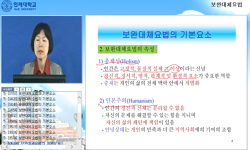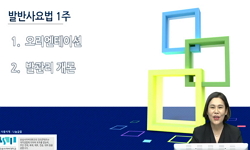기혈(氣血)은 한의학에서 광범위하게 사용되고 있지만 그 정확한 의미는 이해하기 어렵고 아직도 그 개념이 과학적으로 해명되지 않고 있다. 1960년대 김봉한 교수팀이 한의학 경락구조의 실...
http://chineseinput.net/에서 pinyin(병음)방식으로 중국어를 변환할 수 있습니다.
변환된 중국어를 복사하여 사용하시면 됩니다.
- 中文 을 입력하시려면 zhongwen을 입력하시고 space를누르시면됩니다.
- 北京 을 입력하시려면 beijing을 입력하시고 space를 누르시면 됩니다.
https://www.riss.kr/link?id=A76268647
- 저자
- 발행기관
- 학술지명
- 권호사항
-
발행연도
2007
-
작성언어
Korean
-
주제어
황련해독탕 ; 봉한관 ; 흉선 ; 기혈 ; 경혈 ; 경락 ; Alcian blue ; barberry root extract ; BongHan(BH) duct ; Thymus ; Qi ; acupuncture points and meridian
-
자료형태
학술저널
-
수록면
43-57(15쪽)
- 제공처
- 소장기관
-
0
상세조회 -
0
다운로드
부가정보
국문 초록 (Abstract)
한의학 문헌에 의하면 ‘기혈(氣血)’이라 하여 기와 혈을 같이 사용하는 경우가 많다. 이는 기의순환이 혈관과 함께함을 의미할 수 있다고 해석 할 수도 있다고 본다. 우리의 연구와 봉한학설에서 봉한관과 혈관이 함께 달리고 있음은 이런 고전문헌에 관한 새로운 해석의 과학적 근거가 될 수 있다.
기혈(氣血)은 한의학에서 광범위하게 사용되고 있지만 그 정확한 의미는 이해하기 어렵고 아직도 그 개념이 과학적으로 해명되지 않고 있다. 1960년대 김봉한 교수팀이 한의학 경락구조의 실체와 그 안에 흐르는 액체를 규명한 바 있으며, 이 학설은 한의학에서 사용하는 기가 경락을 흐르는 액체와 신호 및 정보의 흐름으로 해석하는 것을 가능하게 한다. 지난 몇 년간 경락의 해부학적인 실체를 찾기 위한 연구가 진행되면서 봉한학설이 재조명되고 있다. 본 연구에서는 흰쥐의 대퇴정맥에 Alcian blue와 황련해독탕의 혼합액을 주입하여 혈관의 주변과 피부 및 내부 장기들 특히 흉선의 혈관주위에서 Alcian blue의 청색반점이 줄지어 분포되었음을 관찰하였으며, 복강내에서는 내외봉한관이 청색으로 염색되는 경우를 보았다. 이 청색의 반점들로 구성되는 줄은 항상 지방, 또는 혈관과 같이 가고 있음을 확인했으며 경혈의 위치에서는 더욱 밀집되어 있음을 입체현미경으로 관찰하였다. 그 조직적인 특성을 실체현미경과 위상차 현미경으로 조사하여 광학현미경사진을 볼 수 있었다. 혈관주변 또는 지방조직 분포된 이 조직은 봉한관의 특성과 일치한다.
한의학 문헌에 의하면 ‘기혈(氣血)’이라 하여 기와 혈을 같이 사용하는 경우가 많다. 이는 기의순환이 혈관과 함께함을 의미할 수 있다고 해석 할 수도 있다고 본다. 우리의 연구와 봉한학설에서 봉한관과 혈관이 함께 달리고 있음은 이런 고전문헌에 관한 새로운 해석의 과학적 근거가 될 수 있다.
다국어 초록 (Multilingual Abstract)
The lines of stained cells appeared in the fatty tissue or around blood vessels, and they were highly concentrated at and around acupuncture points. The specimens were examined by using phase contrast microscope and some of them were studied by H&E staining. According to classical literatures the terminologis Qi and Blood were often used together as 'Qi-Blood'. We hypothesized that Qi flow is pertinent to the BH-ducts and the BH-ducts and blood vessels form a bundle structure as two independent circulation systems. Our finding of the line of blue stained spots along the BH-duct is consistent with traditional 'Gi-blood' terminology, and our hypothesis.
The concept 'Qi' has been widely used in various fields such as philosophy, literature, religion, and traditional medicine in Eastern World Yet, its meaning is not clearly defined, and its scientific relevance is not understood at all. In 1960's Bongh...
The concept 'Qi' has been widely used in various fields such as philosophy, literature, religion, and traditional medicine in Eastern World Yet, its meaning is not clearly defined, and its scientific relevance is not understood at all. In 1960's Bonghan Kim's team found that some liquid flowed in the BongHan(BH)duts that corresponded to the acupuncture meridians. This discovery suggested that Qi might be viewed as the liquid , signal, and information that flowed in the BongHan ducts. In the last several years BongHan theory has been revived through the research to find the anatomical structure corresponding to the acupuncture meridians. In this study we injected a mixed liquid of Alcian blue and barberry-root extract into the femoral vein of a rat and found appearance of blue spots along some blood vessels in skin, internal organs, and especially in thymus. We also observed 'organ-surface BH-duct and corpuscles' that became blue by the circulation of the injected liquid.
The lines of stained cells appeared in the fatty tissue or around blood vessels, and they were highly concentrated at and around acupuncture points. The specimens were examined by using phase contrast microscope and some of them were studied by H&E staining. According to classical literatures the terminologis Qi and Blood were often used together as 'Qi-Blood'. We hypothesized that Qi flow is pertinent to the BH-ducts and the BH-ducts and blood vessels form a bundle structure as two independent circulation systems. Our finding of the line of blue stained spots along the BH-duct is consistent with traditional 'Gi-blood' terminology, and our hypothesis.
목차 (Table of Contents)
- 요약
- ABSTRACT
- Ⅰ. 서론
- Ⅱ. 방법
- Ⅲ. 결과
- 요약
- ABSTRACT
- Ⅰ. 서론
- Ⅱ. 방법
- Ⅲ. 결과
- Ⅳ. 논의 및 결론
- 참고문헌
동일학술지(권/호) 다른 논문
-
- 한국정신과학학회
- 한종구(Han Jong Koo)
- 2007
-
- 한국정신과학학회
- 여상훈
- 2007
-
전일의학 연구에서 흔히 응용되는 심박변이도 지표들 간의 상관관계
- 한국정신과학학회
- 임종호(Im jong-ho)
- 2007
-
- 한국정신과학학회
- 김지영(Kim Ji-Young)
- 2007




 DBpia
DBpia




